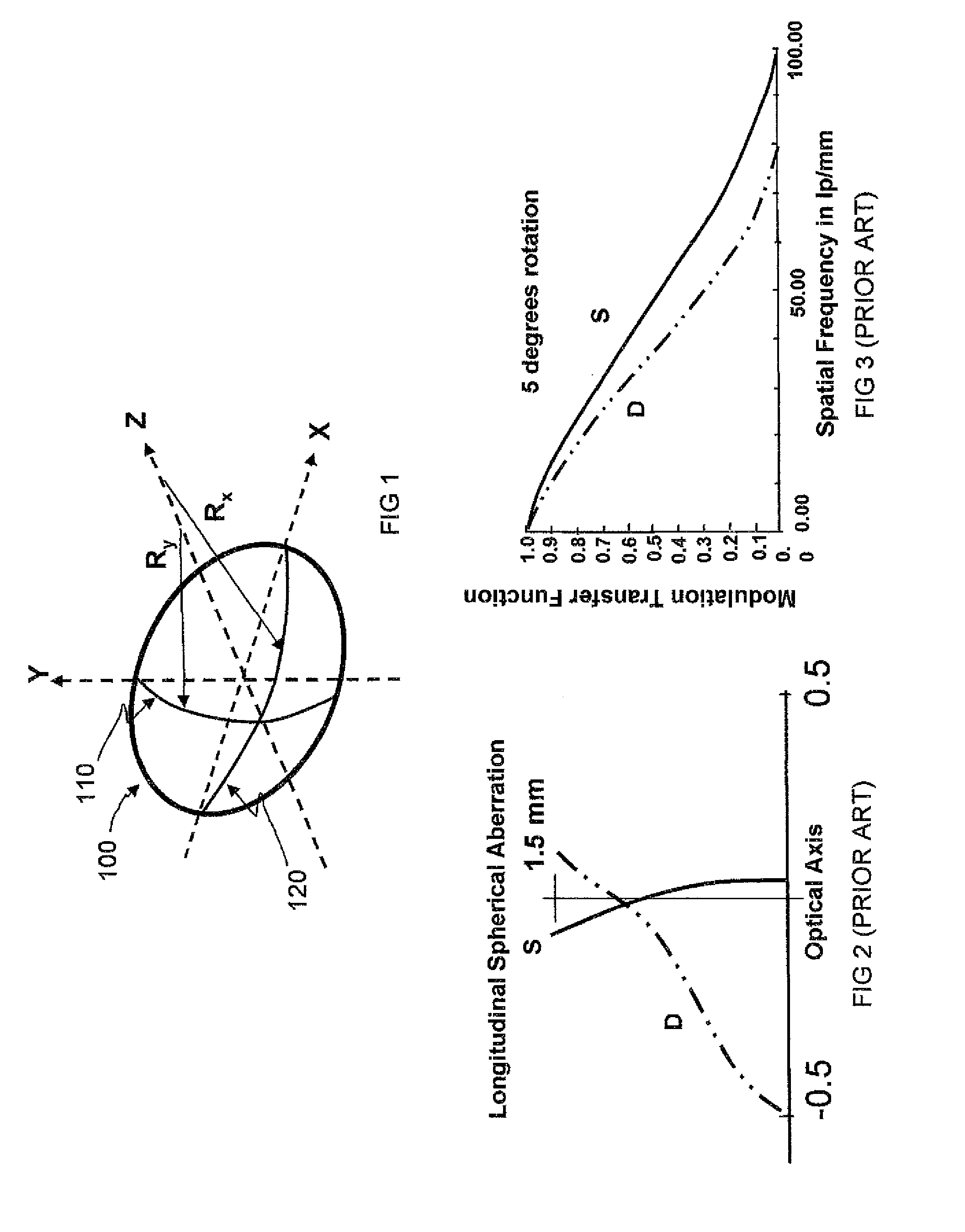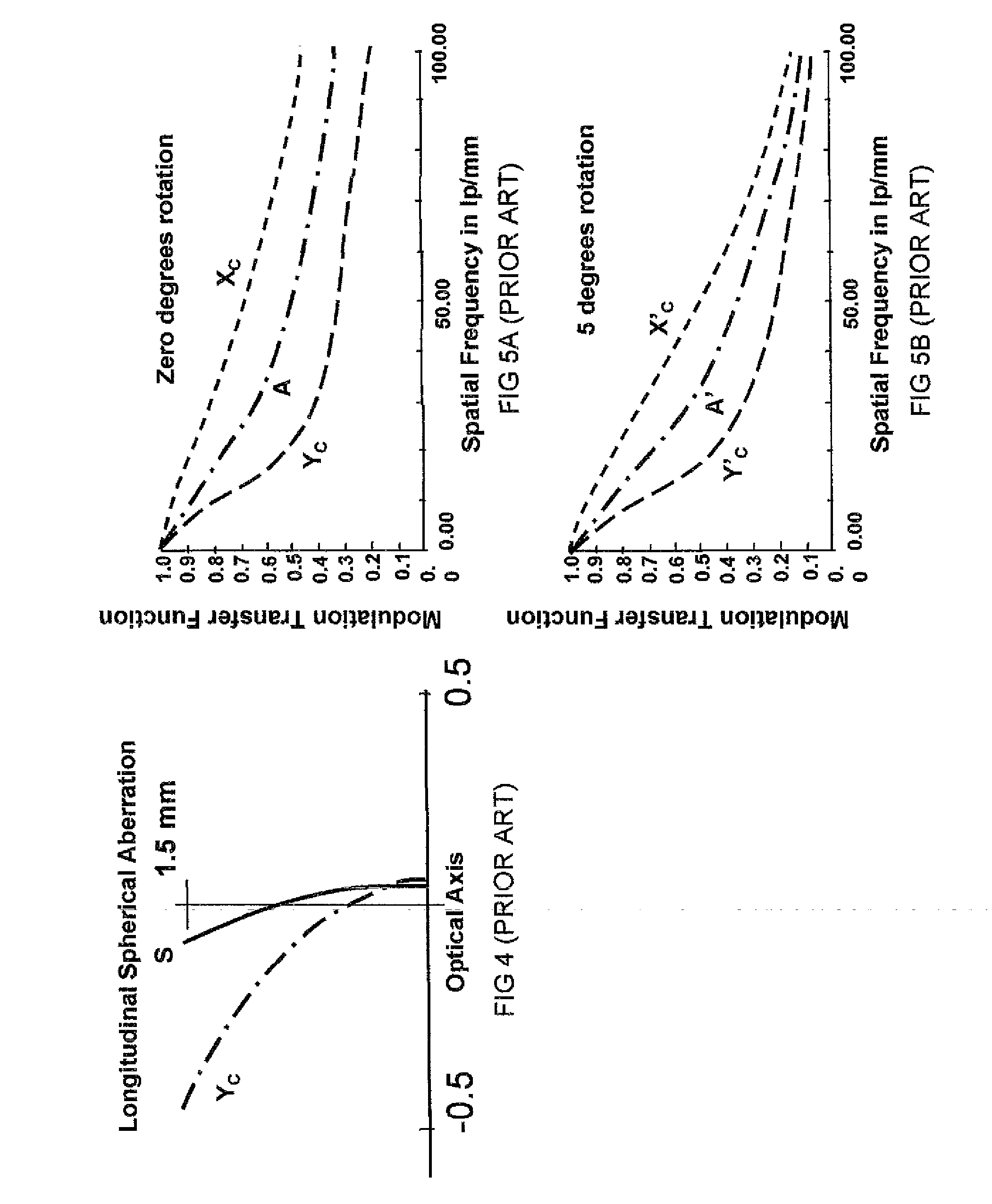Toric ophthalmic lens
a technology of ophthalmology and ophthalmology, applied in the field of ophthalmology, can solve the problems of reducing image quality, reducing image quality, and leaving residual cylinders of aspherization
- Summary
- Abstract
- Description
- Claims
- Application Information
AI Technical Summary
Benefits of technology
Problems solved by technology
Method used
Image
Examples
Embodiment Construction
[0028]FIG. 1 illustrates a toric surface configuration suitable for use as a contact lens, intraocular lens, single element lens or a multiple element lens. The optical axis coincides with Z-axis and the shortest radius Ry (steepest curvature) is along y-meridian which is at the same plane as Y-axis and the longest radius Rx (flattest curvature) is along x-meridian which is at the same plane as X-axis. The toric surface 100 is characterized by the meridians along the steepest curvature, 110, and flattest curvature, 120. It could be that the flattest curvature is along y-meridian and steepest curvature is along x-meridian. For illustrating purposes, this type of meridional orientation in reference to Y- and X-axis has been chosen. In a spheric toric lens, Ry and Rx are constant and the in an aspheric toric lens Ry and Rx are variable, that is, the toric surface has an aspheric cross section at the major and minor axes x-y.
[0029]Toric surface Cylinder is defined by the difference in d...
PUM
 Login to View More
Login to View More Abstract
Description
Claims
Application Information
 Login to View More
Login to View More - R&D
- Intellectual Property
- Life Sciences
- Materials
- Tech Scout
- Unparalleled Data Quality
- Higher Quality Content
- 60% Fewer Hallucinations
Browse by: Latest US Patents, China's latest patents, Technical Efficacy Thesaurus, Application Domain, Technology Topic, Popular Technical Reports.
© 2025 PatSnap. All rights reserved.Legal|Privacy policy|Modern Slavery Act Transparency Statement|Sitemap|About US| Contact US: help@patsnap.com



